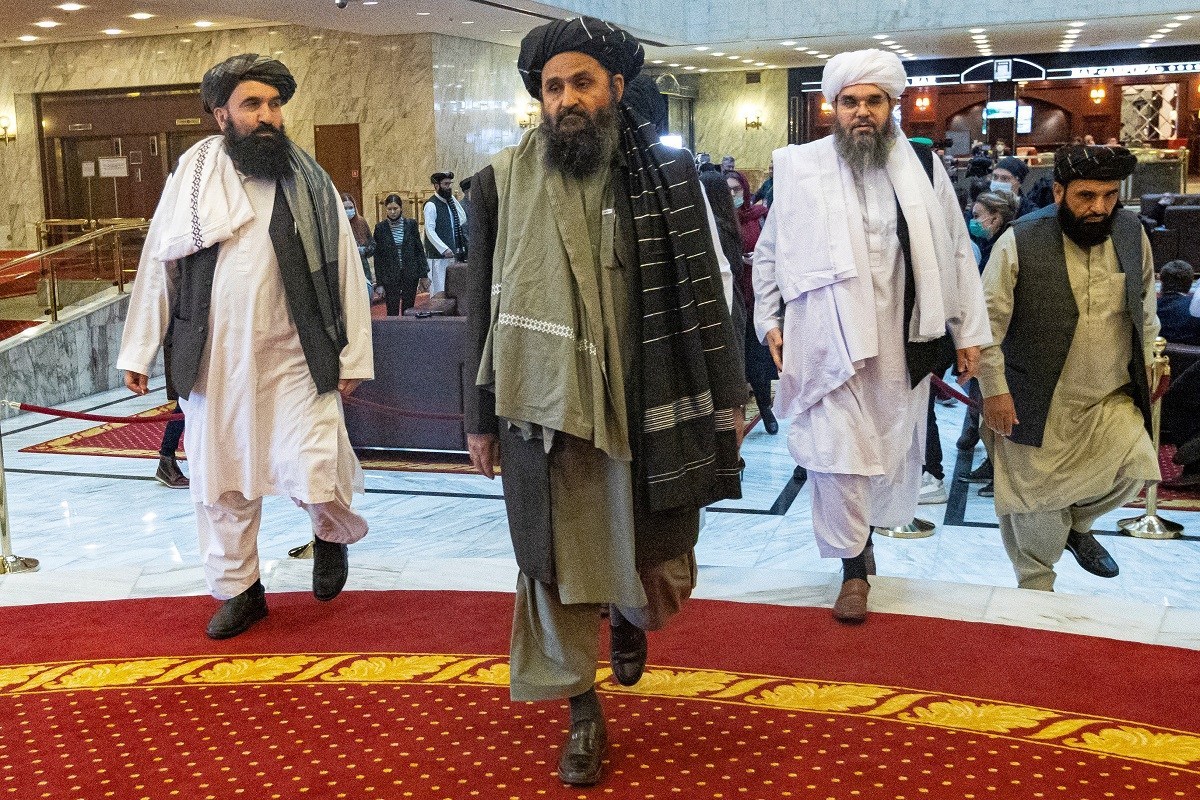[ad_1]
Russia seeks to become an important player in conflict resolution in Afghanistan, where the interests of various regional and global powers, including the United States, come together.
While the West remains highly suspicious of Russia – especially since the revelation of Moscow’s alleged attempt to influence last year’s US presidential elections and the Alexei Navalny poisoning – in Afghanistan today Moscow and Washington have a very similar, though not the same, agenda.
One reason for this hinges on the transit of gas from Turkmenistan to South Asia. And it is this, indeed, that offers a sign at how any eventual peace in Afghanistan revolves around greater Russia-US cooperation rather than increased enmity.
A summit held in the Russian capital on March 18 is one of a number of diplomatic initiatives intended to jumpstart the stalled Afghan peace process.
Even though Russia recalled its ambassador from Washington after Joe Biden said Vladimir Putin would “pay a price†for the alleged election interference and had agreed with an interviewer that he was “a killer,†the American special representative, Zalmay Khalilzad, nevertheless went to Moscow to participate in the summit.
Besides him, Russia also hosted envoys from China, Pakistan and Qatar, as well as various Afghan parties. Although the Taliban are banned by Russia, their leaders also attended the talks.
It is not the first time the Kremlin has negotiated with the Taliban. The Soviet Union invaded Afghanistan in 1979 and remained mired there for a decade. As many as 15,000 Soviet soldiers were killed in a conflict with US-backed Islamist guerrillas.
The invasion, which aimed to prop up an allied communist government, ravaged the country, killing an estimated 1 million Afghans and destroying the country’s infrastructure. But after the Taliban finally took control in 1996, Russia established contacts with their leadership.
Ever since, the Kremlin has taken a pragmatic position vis-à -vis the Taliban. Moscow never rejected talks with the Taliban, since it is aware that the Islamist group cannot be excluded from the reality of today’s Afghanistan. In 2019, a Taliban delegation held talks with Russian officials in Moscow after the US negotiations with the Afghan group collapsed.
From Russia’s perspective, the current Kabul government is too dependent on the US, which is why the Kremlin aims to strengthen its ties with its major rival – the Taliban – while at the same time trying to keep good relations with the central government.
In other words, Russia is balancing between the two major factions, although there are indications that it is attempting to warn Kabul that it has no option but to reach an agreement with the Taliban on the configuration and balance of power in a “post-American Afghanistan.â€
The Taliban already rule large parts of Afghanistan and have vowed to support and protect the construction of the Turkmenistan-Afghanistan-Pakistan-India pipeline. When completed, TAPI will transport natural gas from the Galkynysh gas field in Turkmenistan through Afghanistan into Pakistan and then to India.
That is one reason both Moscow and Washington are forced to make deals with the group. The US already has demonstrated its readiness to cooperate with the Taliban in order to protect its geopolitical interests in the region.
The Biden team faces a May 1 deadline to withdraw the United States’ remaining 2,500 soldiers from Afghanistan under a February 2020 deal reached between former president Donald Trump’s administration and the Taliban. At this point, however, it is not clear if Washington will try to formally postpone the withdrawal.
One major problem for the US is that it is unlikely to be able to leave Afghanistan while also preserving a regime in Kabul friendly to Washington. However, if the Americans do not withdraw, the country could easily sink into another full-scale war.
Russia, on the other hand, fears that the US might attempt to maintain a permanent base in Afghanistan, from which it could encircle Iran and protect American interests in Central Asia’s mineral resources. Moscow is also worried about increased terrorism activity in Afghanistan’s northern provinces, close to the borders of former Soviet republics such as Tajikistan and Uzbekistan.
Indeed, neutralizing potential threats from terrorist groups from the south has been Moscow’s main interest for a long time. Some Western analysts, however, argue that Moscow is using this threat to increase its military presence in Central Asia, while remaining silent about the United States’ similar intentions.
Both, in fact, share goals on parallel tracks. And in any case, the declared goal of both the US and Russia in Afghanistan is the same – to prevent extremist groups from turning the country into a safe haven for world terrorism after the withdrawal of American troops.
The Russian-backed conference was one of a number of diplomatic initiatives aimed at reigniting the peace process. Turkey recently said it plans to host another round of Afghan peace talks in Istanbul in April. The venue aside, the success or even limited effect of such talks will revolve around Russian powers of persuasion and enticement.
Yet it is highly improbable that Russia alone will be able to ensure a permanent peace in Afghanistan. Nor in fact can the US go it alone. The truth is, no single guarantor of peace is viable in the Afghan context.
Thus the future of the war-torn country likely will depend on wider geopolitical deals between Moscow and Washington. And that means, perhaps, putting the Afghan process on a separate track than the Moscow-Washington dispute over the US elections and Navalny.
The question is whether a new US administration attempting to show it is as tough as Donald Trump on traditional American adversaries – China included – is willing and able to do so.
This article was provided by Syndication Bureau, which holds copyright.
[ad_2]
Source link














